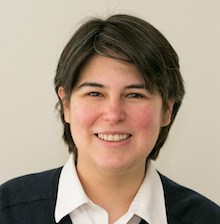
”…I have observed that people want the magic new thing more than they want improved management to fix problems. Managers need to carefully determine the areas in their business where new technology is the right choice and other areas where a back-to-basics management approach may be more effective.
- Temple Grandin, quoted in Tribe of Mentors by Timothy Ferris
Is Your Organization Truly Ready to Automate?
Nonprofits are in a unique position with their technology needs. With complex program delivery and ever-changing funder requests for new and different data, it is often a struggle to map an organization’s processes, let alone find the right technology to support those processes.
In my role as 501Partners’ senior solutions architect, I’ve had the opportunity to build or design dozens of interesting, complex technical solutions for a range of organizations using Salesforce. Needless to say, I’ve learned some important lessons along the way.
Lesson 1: Assess internal capacity. It’s critical to align internal capacity with technology selection—this is so important that it became the subject of an entire ebook.
Lesson 2: Timing is everything. The second is that even though tools such as Salesforce let us automate faster and less expensively than ever before, it’s important to slow down and help organizations evaluate their readiness to own a custom automation. There are long-term maintenance consequences to customizations made before an organization is ready to adopt or support them, and these consequences can be expensive.
”The first rule of any technology used in a business is that automation applied to an efficient operation will magnify the efficiency. The second is that automation applied to an inefficient operation will magnify the inefficiency.
- Bill Gates
Before you automate anything in Salesforce, you need to ensure that your internal team understands where the data lives and how to interpret it. They must know how to discern when data is correct so that they can trust it. Processes and personnel to own and manage oversight of this work must be in place. Note that these are management activities, not technology activities. Misunderstanding where the responsibility lies, and what the technology is supposed to do, is a leading cause of frustration and money spent on outside consultants.
Once a process is automated and tested, the automation will faithfully execute the rules you set up without any exceptions or judgment a human might place on the same set of data. Because nonprofits’ policies and practices change so rapidly, someone inside the organization should be empowered to monitor the relationship between processes and data capture. When your practices change, any technology related to that practice also has to change, and only someone inside of the organization can know when that occurs. Making sure the system and processes are aligned is good data governance.
Preparing to Automate
As part of our process at 501Partners, we request the following sequence of steps, which are designed to build strong internal management, ownership, and understanding before investing in automation.
1. Can you identify the process owners and influencers?
Who in your organization makes final decisions about how the thing you’re trying to automate should work? Who inputs the data or gets the final say on how the data is interpreted?
2. Can you outline the process you’re trying to automate using “always” and “never” language?
An example might be: “When we accept an applicant into the program, applicants from Chicago always get assigned to one of these three people.”
Another might be: “When we change the donation stage from pledged to posted, we always send a thank you email to the donor.”
And most important: Do your process owners and influencers agree that your statements are accurate?
3. Can you log into Salesforce and identify the fields that you would use if you were manually deciding to take the action you want to automate? Can you identify how you would manually take the steps you want to automate?
a. If not, how will that data be captured, by whom, and who will own the process of ensuring the information is correctly put into the system in the new fields?
Following the application example from question #2:
- What field do you look to or what criteria do you use to determine that someone is an applicant?
- What field do you look to or what criteria do you use to determine that an applicant has been accepted?
- What field do you look to or what criteria do you use to determine the applicant is from Chicago?
- How would you decide who gets the assignment? Can you write that down using “always” and “never” language? Where do you look to make the decisions?
- How would you indicate someone has gotten the assignment? Where would you store that in Salesforce?
4. Can you build a list or report that shows all of the records that meet your criteria so that you can monitor the records and take action in bulk?
a. If no, go back to steps 1-3 or get a consultant to assist you in identifying the gaps.
b. If yes, review the list/s carefully:
- Which records that should show up don’t?
- Which records that do show up shouldn’t?
- Are there patterns? Do those patterns need to be incorporated into your logic?
- Can you use the information on the list to bulk edit or bulk change the data that you want to automate?
When you construct lists that show all of the records that should match your rules, you can very easily see if your rule applies to 100% of the records impacted or not. This is important, because automating in Salesforce is essentially taking the rules that you used to set up your lists and ensuring that the rules will be applied consistently.
Further, when you try to bulk edit or bulk change from the information you’re seeing on the screen, it’s a good test of whether everything is in place to facilitate an automation. Depending on your Salesforce skills, you may need some assistance to figure out how to work in bulk with the records.
5. Can you review your lists carefully and bulk change your data for several weeks or months?
This is the part nobody wants to do, but it’s a critically important step. Only by engaging with your data over time will you:
a. Gain a real understanding of the exceptions to your rule. You can use this knowledge to either go back to step 1 and incorporate new information into your rules, or prepare to manually mitigate the 5% or so of exceptions that will occur once you automate.
b. Establish that this process is, in fact, a good candidate for automation. The nonprofit space changes all the time. If you find that you’re always making exceptions to your rules, or that the rules have changed, or everybody is doing different things with your data, then that process isn’t mature enough to automate.
c. Establish that your organization has the capacity to monitor and manage the outcomes of your automation for the long haul. Ongoing management and oversight is critical to ensuring an effective automation. If you don’t have the internal capacity to review data and re-train users, or you don’t have the structure that allows the data owner to intervene with the data producers’ managers, you will have a system that isn’t trusted or maintained.
d. Understand the rules and data well enough to verify the automation. If you do decide to automate, you’ll need rigorous ways to test it, because it will apply to all data without fail from this point forward. Knowing that you already have lists set up to use—and that you already know what is an exception that shouldn’t be cause for concern—can save a lot of stress and cash during testing time.
It may be difficult to follow these steps on your own, particularly if you are new to Salesforce. You may want to engage a consulting firm such as 501Partners to help you think through these steps, see how they work in Salesforce, and teach you how to bulk update your records. Following these steps will result in your organization increasing its capacity to manage any automation you ultimately undertake, while providing clarity on specifications and testing that will make the automation process go more smoothly. You won’t regret the investment of time into this process, and your experience of Salesforce will be richer and more powerful for it.

Jenn Taylor
Jenn is a business process designer and operations technologist with nearly 20 years of experience launching and maintaining projects with nonprofits, local government, higher education, and startups. Prior to joining 501Partners, Jenn founded a consultancy specializing in operational effectiveness for nonprofits and higher education. She brings that experience and passion for helping organizations execute in a smart and sustainable way into her role at 501Partners. Jenn holds an MBA in Nonprofit Management from Brandeis University’s Heller School for Social Policy and Management.

